Ukraine’s blue-yellow flag marks 33 years of independence symbolism
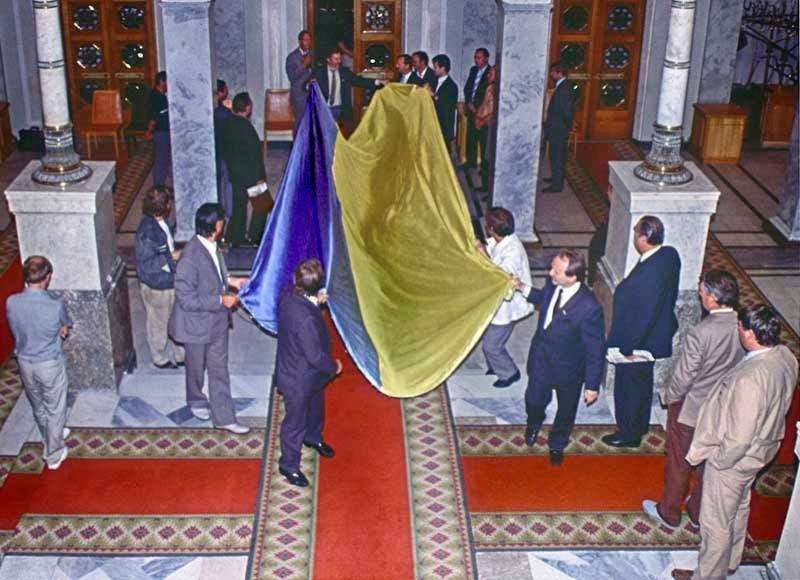
Today, on 23 August, Ukraine marks its National Flag Day.
In the morning of 23 August senior officials congratulated Ukrainians on this holiday, reaffirming the country’s commitment to territorial integrity and rejecting any peace agreements that would cede occupied lands to Russia.
President Volodymyr Zelenskyy delivered remarks emphasizing the flag’s symbolic power for Ukrainian prisoners of war and civilians in occupied territories. “This flag is salvation for people we return from Russian captivity – when they see Ukrainian colors, they understand the evil has passed,” Zelenskyy said. “This flag is the goal for our people in occupied territories. We will not give our land to the occupier.”
The president highlighted that the blue and yellow banner represents the sacrifices of hundreds of thousands of Ukrainian military personnel defending the nation’s sovereignty across multiple front lines.
Chief of the Armed Forces Oleksandr Syrskyi echoed these sentiments, describing the flag as “a symbol of freedom that Russia fears – a banner of people fighting for independence.” Syrskyi expressed confidence that Ukrainian forces would eventually raise the flag in currently occupied cities including Donetsk, Luhansk, Simferopol, Sevastopol, Mariupol, and Berdiansk.
In Ukraine, the national flag symbolizes national unity, honor, dignity, and resilience. Its blue and yellow colors represent the peaceful sky over golden wheat fields, reflecting Ukraine’s natural landscape.
The Ukrainian flag became a symbol of resistance during the Russian full-scale invasion in 2022. The Russian occupying forces sought to suppress this symbol. They have been banning and punishing those who displayed the flag, which further strengthened its role as an emblem of defiance and hope for liberation in occupied territories. The flag thus embodied the spirit of national resistance and the struggle for independence.
In occupied Crimea, Russian authorities prosecute Ukrainian flag displays more severely than Nazi symbols, according to the civil organization Crimean Process. In the past six months, there were three times more court cases against Ukrainian supporters than against individuals promoting Nazi symbolism, with 56% of all banned symbol cases involving pro-Ukrainian citizens.
“People who demonstrate pro-Ukrainian views are not only prosecuted more frequently, but also subjected to humiliation, fabricated charges, and moral pressure through propaganda in the media,” according to the report. While 26% of Ukrainian cases resulted in arrest, no defendants with criminal subculture symbols were imprisoned.
The History of the Ukrainian National Flag
A holiday established at the state level after President Leonid Kuchma signed a decree on 23 August 2004, introducing the celebration of this day.
The blue and yellow banner carries a history spanning centuries, with the first documented use of these colors in Ukrainian national symbolism recorded during the Battle of Tannenberg in 1410 on banners of troops from Lviv and Peremyshl Voivodeship (now the territory of Poland).
The earliest mentions of blue and yellow colors in official symbolism date to 1256, when Prince Danylo Halytskyi gifted Lviv a coat of arms featuring a yellow lion on a blue background.

Gold and blue colors also appeared on the coat of arms of the Galicia-Volhynia Principality, a medieval Ukrainian kingdom that existed from 1199 to 1349.
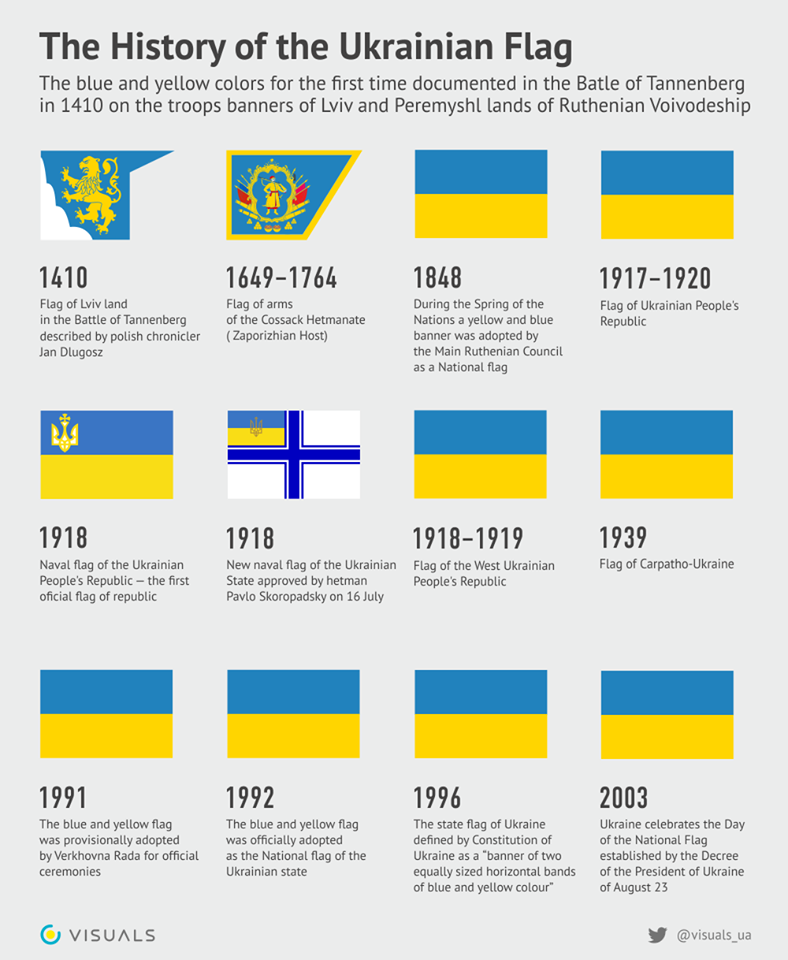
Medieval origins to Cossack Era
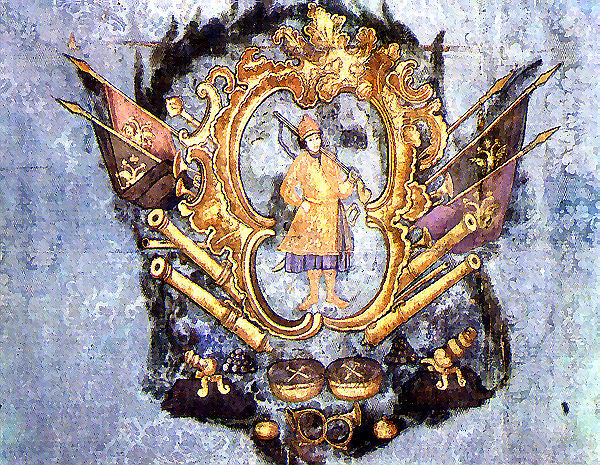
In 1410, the flag of Lviv land appeared at the Battle of Tannenberg, as described by Polish chronicler Jan Długosz. The Cossack Hetmanate used a flag of arms from 1649-1764. During the 1848 Spring of Nations, the Main Ruthenian Council adopted a blue and yellow banner as a national flag.
The blue-yellow flag served as the state symbol of the Ukrainian People’s Republic during the national liberation struggles that began with the collapse of the Russian Empire in 1917, and later for the Ukrainian State in 1918 and the UNR under the Directory.
Naval history and Soviet persecution
On 29 April 1918, sailors raised the Ukrainian flag over ships of the Black Sea Fleet during the Crimean operation led by Colonel Petro Bolbochan. This occurred despite a German ultimatum that forced Ukrainian troops to leave Crimea under the Brest Agreement, which ended Ukraine’s involvement in World War I.
“Ukrainian flag to be raised! And under the trumpet and whistle of petty officer-sailors, the Ukrainian flag flew up. ‘Dismissed!’ Together with the team, the trumpeters played. Almost throughout the entire Black Sea fleet, large yellow-blue canvases fluttered in the air,” Senior Lieutenant Sviatoslav Shramchenko recorded the moment.
The naval minister’s flag, preserved by Lieutenant Sviatoslav Shramchenko, is now located in Chicago, US.
During Ukraine’s time within the USSR, ordinary storage of the Ukrainian banner was illegal, let alone its public display. However, brave individuals occasionally displayed the blue-yellow flag on administrative buildings of Soviet power.
On 1 May 1966, a blue-yellow flag flew over the roof of the Kyiv Institute of National Economy. The KGB detained the organizers – master plumber Heorhii Moskalenko and welder Viktor Kuks, who served two years of strict regime in a colony.
In 1973, the Rosokhach group organized by Volodymyr Marmus displayed yellow-blue flags in Chortkiv, Ternopil Oblast, to mark the anniversary of the IV Universal proclamation of UNR independence. Marmus was sentenced to six years in camps and five years of exile.
Road to Independence
On 24 July 1990, the blue-yellow flag flew over the Kyiv City Council, marking the ninth city to raise the Ukrainian banner. On 24 August 1991, the blue-yellow flag was brought into the session hall of the Verkhovna Rada (Ukrainian Parliament) of the Ukrainian SSR, after which Ukraine’s independence was proclaimed. On 4 September 1991, a blue-yellow flag was raised near the Verkhovna Rada building.
The Verkhovna Rada of Ukraine resolution of 28 January 1992, officially established the blue-yellow flag as a state symbol. The 1996 Constitution defined the State Flag of Ukraine as a “banner of two equally-sized horizontal bands of blue and yellow colour.”
Beyond earth’s borders
Ukraine’s flag first unfurled in space in 1997 when Leonid Kadeniuk, the first astronaut of independent Ukraine, took it on his mission. Ukraine’s anthem also sounded in space for the first time.
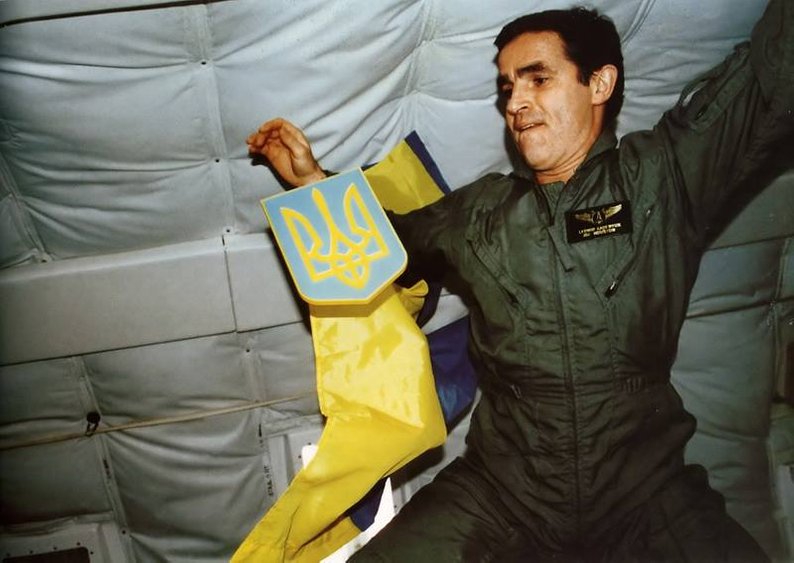
American astronaut Heidemarie Stefanyshyn-Piper, of Ukrainian descent, and American astronaut Randolph Bresnik, who adopted a child from Ukraine, subsequently carried the Ukrainian flag to space. The flag that first traveled to space is now preserved in the Zhytomyr Museum of Cosmonautics.
Recent history and wartime symbolism
On 23 August 2004, Ukraine celebrated its first Day of the National Flag, established by presidential decree.
On 28 April 2014, the last pro-Ukrainian rally “For a United Ukraine” took place in Donetsk before the city’s capture by pro-Russian separatists during the conflict in eastern Ukraine. About 2,000 demonstrators participated in the march, which was attacked by people in camouflage armed with knives, traumatic weapons, bats, and chains. Fifteen people sustained serious injuries and five went missing.
On the night of 23 August 2020, the ARTEFACT project created media art of the Ukrainian flag that illuminated the sarcophagus of the fourth power unit of the Chornobyl Nuclear Power Plant, the protective structure built over the 1986 disaster site. The flag appeared on a structure 110 meters high and 165 meters wide.

In summer 2022, servicemen of the 73rd Maritime Center of Special Operations Forces named after Kosh Otaman Antin Holovaty, together with a unit of the Main Intelligence Directorate of the Ministry of Defense, returned control over Zmiinyi Island in the Black Sea. Ivan Pylypchuk and Oleh Subota raised the flag in early July 2022.
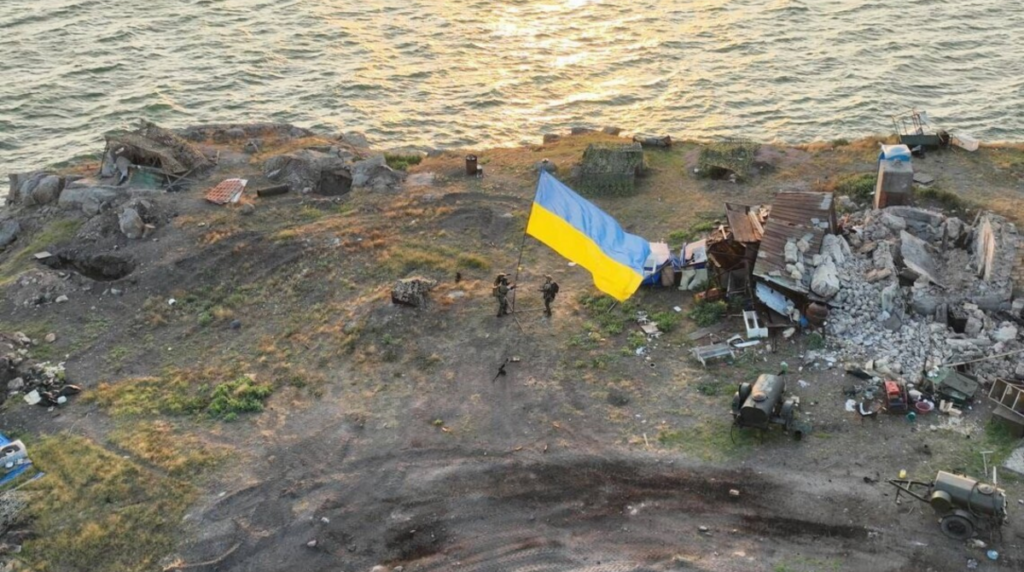
On 11 August 2024, Armed Forces of Ukraine servicemen raised the state flag of Ukraine on the Kinburn Spit in Mykolaiv Oblast, located on the left bank of the Dnipro River. A spokesman for the Main Intelligence Directorate declined to comment on operation details, emphasizing that “measures are ongoing.”